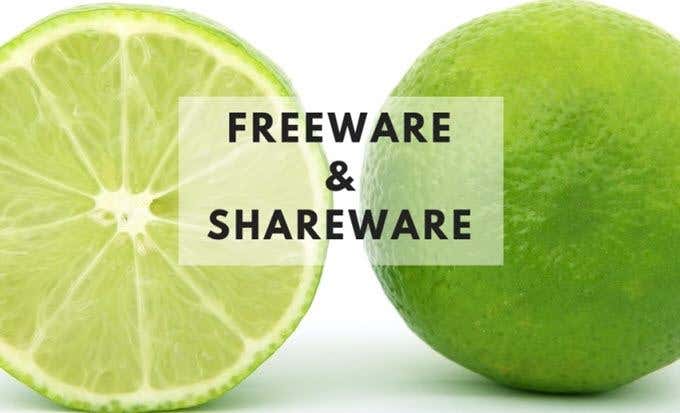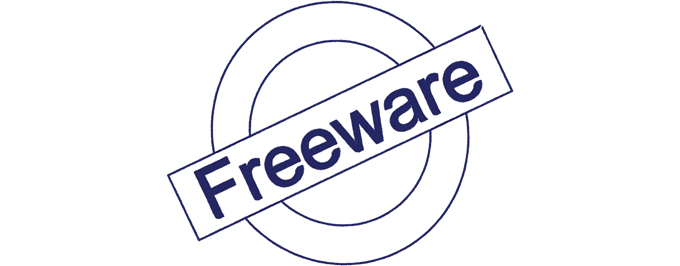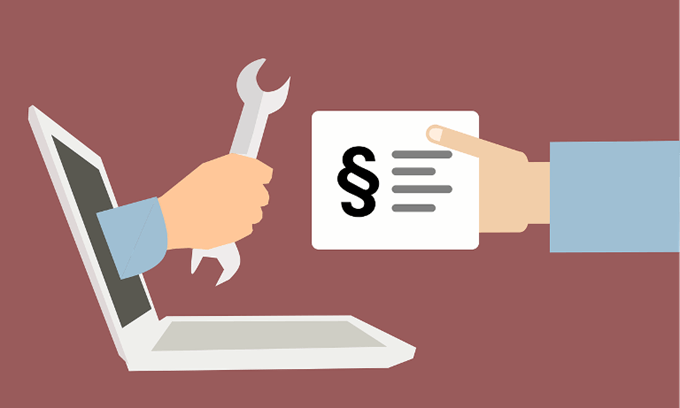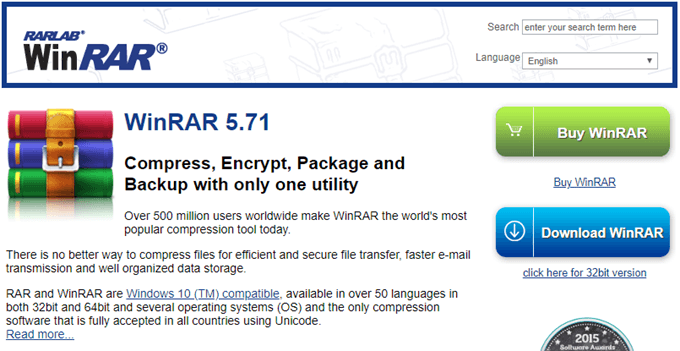A few months later, Bob Wallace, a Microsoft software developer, developed the PC-Write word processor and called it shareware because it wasn’t distributed freely. Ideally, freeware – or free software – is fully available for free, without any feature or time limits. Shareware, on the other hand, is a preview version of commercial software with limits on features, time and usage, plus other hobbling to nudge you to purchase the full version. We’re going to look at each term individually with examples of each type of software, and show you why they’re different.
What Is Freeware?
Freeware is a portmanteau of “free” and “software”, and refers to software that’s 100 percent free, without no paid licenses, fees, expiration dates or restrictions on their use. This shouldn’t be confused with “free software” though, which gives users the freedom to do whatever they want with the program as it’s void of restrictions. Freeware is free to use, at no cost but is under copyright, while free software is copyright-free and has no constraints or limitations. Users of free software can make changes to the programs’ core elements, rewrite or overwrite whatever they want, and change it as they please. Free software isn’t free as such because there’s no cost element to it, but, to be truly free, the software developer has to release it by giving away the source code. Some examples of free software include LibreOffice and GIMP among others. It’s legally redistributable and users can profit from it, whether or not they spent anything to get it or make more from it than the initial cost. Freeware is completely free but copyrighted nonetheless, and its source code may or may not be freely available. Unlike free software, it isn’t necessarily editable or modifiable to create a whole new program. It may be restrictive particularly where it’s used for commercial purposes and not private use, and a paid edition exists with more features. In this case, the developer may restrict its functionality. Normally, developers have commercial and free software, so they give out the freeware version in a bid to advertise the commercial version, but with fewer features. For instance, the freeware may come with ads, or the developer may lock down a few features until the user purchases the commercial version, or gets a license that unlocks the extra tools. Freeware developers also grant users more or less access and freedom to the program and have the leeway to lock down the source code or restrict its usage in specific environments, among other restrictions. There are some freeware programs that are freely available to the public for educational purposes.
Examples Of Freeware
Freeware comes from many sources and in different forms. You can find freeware PC games, driver updater programs, data destruction software, and freeware mobile apps, antivirus software, image editing programs and more. Skype, Google Chrome, PDF file reader Adobe Acrobat, CCleaner and AOMEI Backupper are some practical examples that are widely used today. Also, be sure to check out our excellent list of 99 of the best freeware programs you can download.
What Is Shareware?
Shareware is commercial software that’s available at no cost but is designed for sharing with others. Developers distribute shareware on a trial basis or in a limited format with an expiry date, so that users can test run the software and hopefully decide to purchase the full versions. A good example of shareware is the new games developers make available on a limited basis, allowing gamers to experience and share before purchasing the full version. Unlike freeware that can be used at no cost and for an unlimited period of time, shareware is limited in the length of time you can use it for, even though it’s cost-free. Another limitation with shareware is that you only get the full functionality of the software once you get a shareware license by buying the software. You’ll find most shareware programs constantly nagging users to buy the full version, or lock down functionality after the trial period has ended. Some developers may use a login screen to grant access to a user account with valid registration details, or, offer a product key or license file to upgrade to the premium version.
Examples Of Shareware
Shareware can be found in a wide range of categories, mostly focused on making it easier for users to fulfill specific computing needs. These categories include:
Freemium or liteware, which is free but limited to non-premium features. If you want to access premium or advanced features, you have to pay first. It limits usage time and imposes restrictions on who uses the software, such as individuals, students or businesses. A good example of freemium is CCleaner, whose standard features are completely free, but you pay for scheduled cleaning, premium support, updates and more.Adware or ad-supported software is a popular type of shareware. It comes with advertisements within its installer file. Other apps with popup ads or in-program ads running before, during or after the software runs are considered adware too.Demoware, or demonstration software, is shareware you can use for free, but it limits you to a specific time frame like free trials or restricts (cripples) most primary functions of the program until you pay for it.Nagware is the annoying type of shareware that may send occasional reminders for you to pay to use it, or intrusively suggest upgrades to a premium version to access features. They tend to come in the form of popups or ads when you open, use or close the software. Some free antiviruses like AVG and Avira are culprits of nagware.Donationware usually offers the shareware for free but suggest that you donate a small amount of money to activate and access some paid features.
Popular shareware programs you may know about include WinRAR, AnyDVD, Adobe and Microsoft programs, some antivirus software and more. Shareware may come with a few security issues like malware, which cybercriminals send through URL links or ads that seem legit but redirect users to malware-ridden pages instead of the genuinely safe shareware application. It’s particularly at risk because most such programs aren’t fully licensed and don’t have updates or patches, which may put your system at risk too, especially if left on the computer.
In Summary – Differences Between Freeware Vs Shareware




